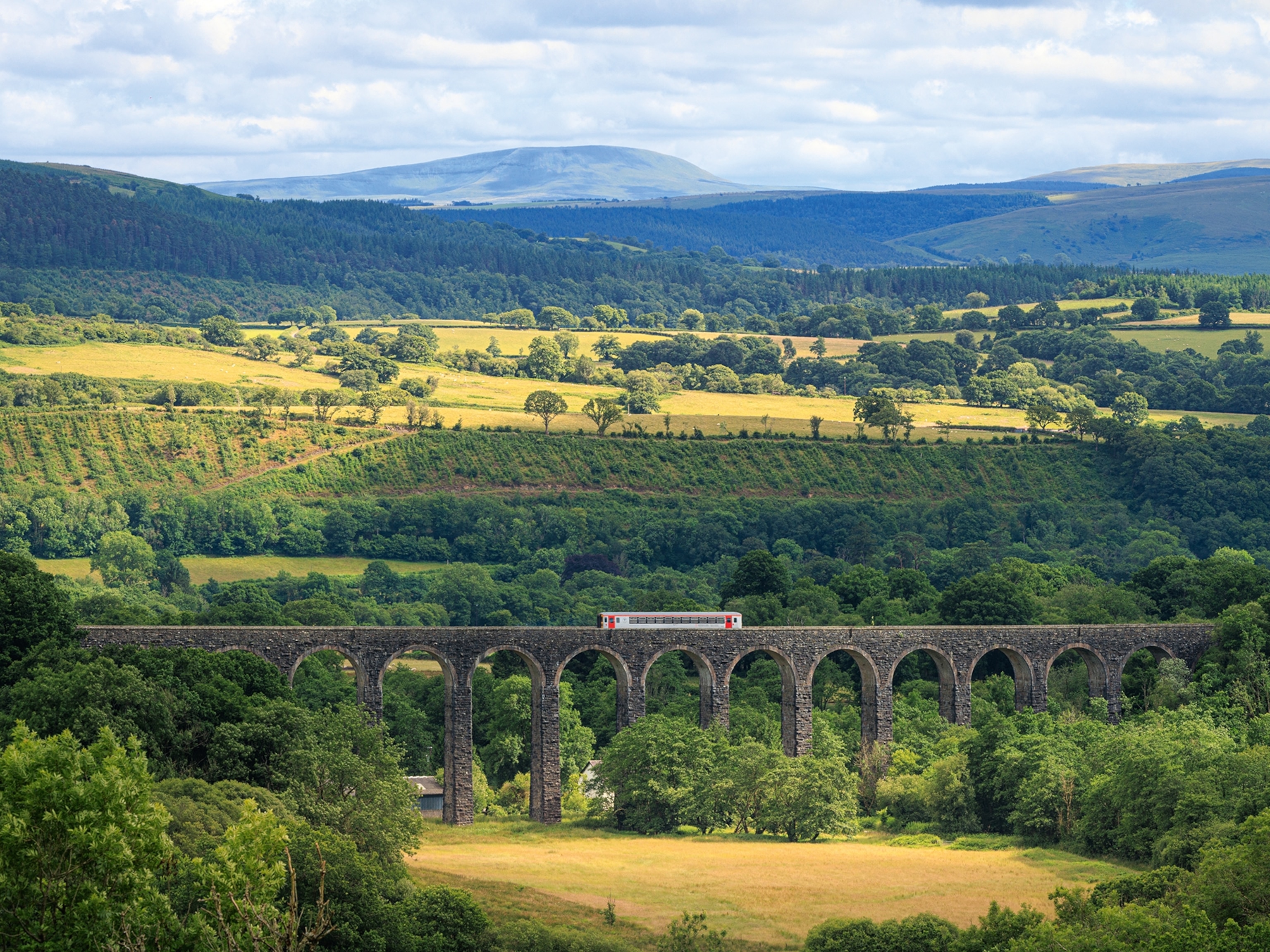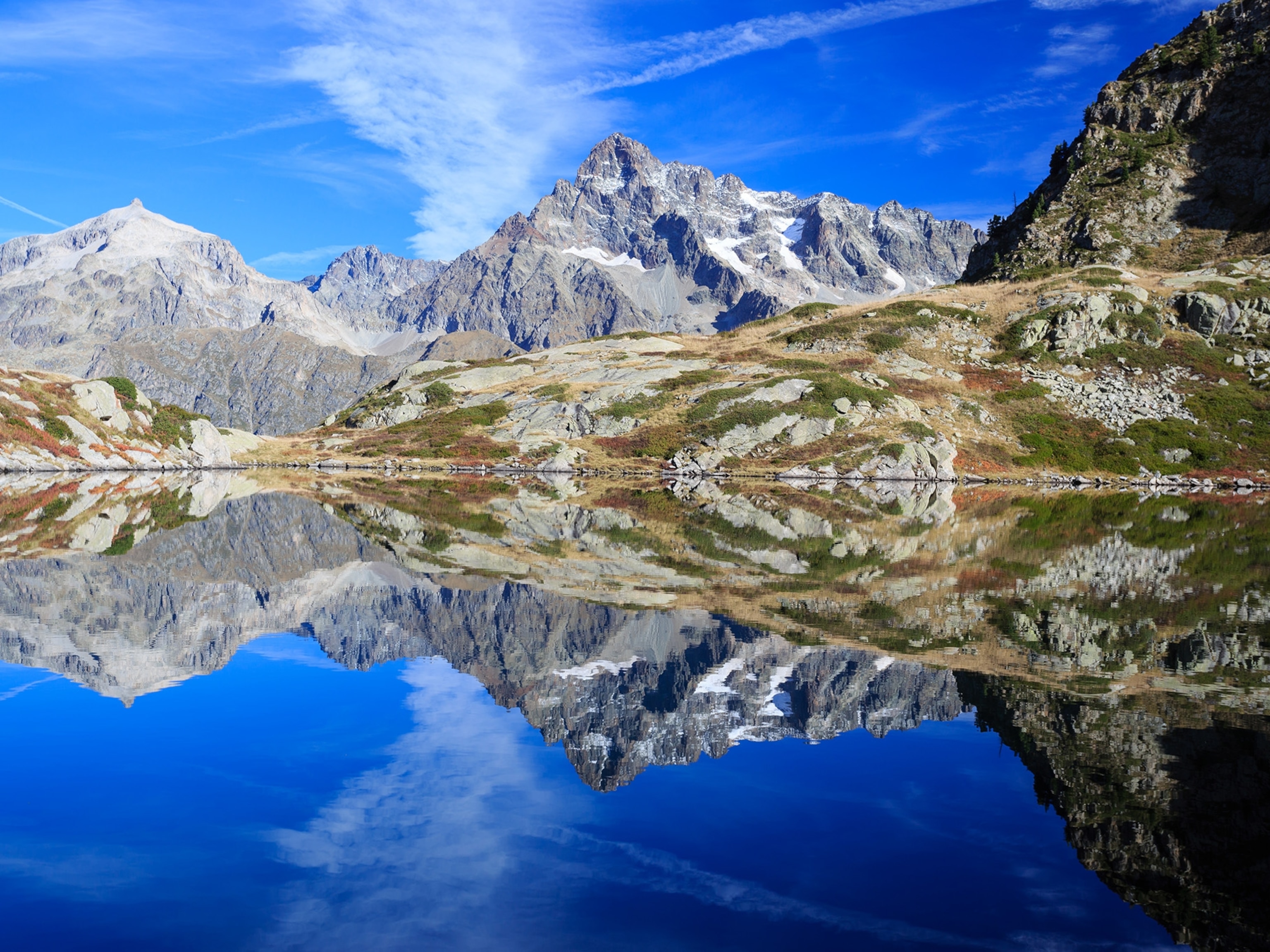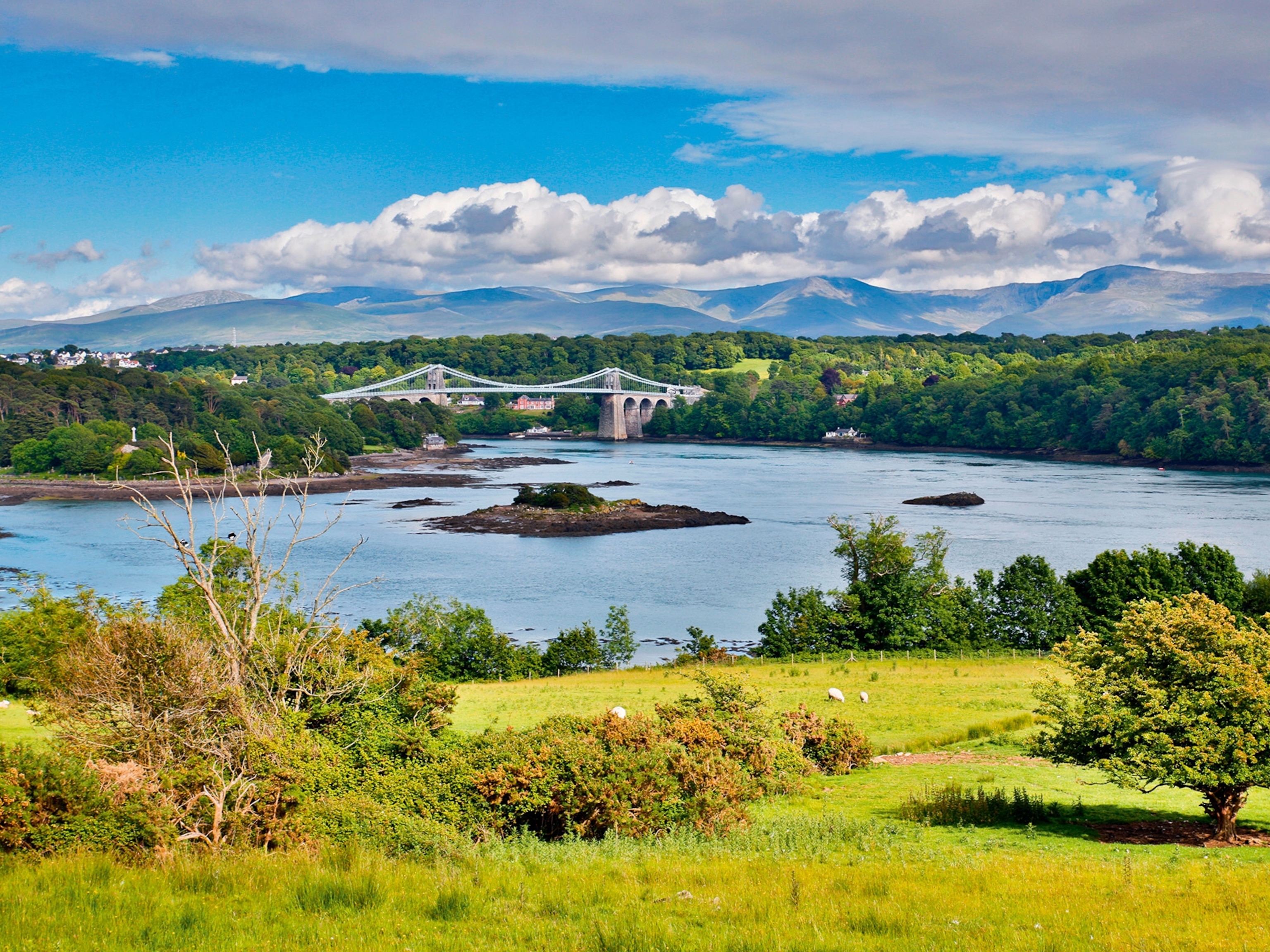
How walking Wales's Cambrian Mountains unleashed this author's wild side
The Cambrian Mountains are a small Welsh wilderness where walkers can find themselves transported to a more primal place and time.
I don’t know when I started using the word exotic to describe the Welsh uplands. The more commonly used adjectives are lonely, barren, windswept. But today, so close to the summer solstice, after weeks of constant sunshine, this Cambrian Mountain scene is almost African, reminding me of the uplands of Kenya. The little River Elan, far below, is fringed with blazing trails where algae has dried hard on the rocks turning salt white. The slopes are tan and umber. The line of the horizon shifts and undulates in a heat haze. Replace the ubiquitous sheep with antelopes and you’d believe you were far away from here.
This is a miniature wilderness in a tiny country, pathless, but always within walking distance of civilisation. I’m following a barely visible animal track through knee-deep grass and areas of dried bog, heading north with no destination in mind, just wanting to see what’s over the next summit. It’s a very different experience to the first time I walked in the Welsh hills when I moved here two decades ago. That walk was in an all-day dusk, the mist shifting in the wind. Within a few steps of the road, I was lost. I followed a rising track and stopped by a half-collapsed pile of stones. The silence of the place engulfed me, I’d never been anywhere so seemingly empty.
Listening is like watching — more appears the harder you concentrate. But in that place, I could only detect a distant, mewling buzzard. After years of city living the emptiness scared me. Then the mist drifted away, and a pool of sky opened and filled with lapwings. To me, lapwings are the most exotic birds we have on these islands, the equivalent of the hummingbirds of the Americas, or the hornbills or turacos of Africa. Then, the sky closed as quickly as it had opened, and the lapwings vanished. But seconds later I saw and heard a curlew for the first time, its trailing call as exotic as its impossibly long beak. I fell in love.
Since then, I’ve walked almost daily in these hills, watching and listening. The Cambrian Mountains have become a focus, particularly the peaks surrounding the Aberystwyth mountain road, which folds all the landscapes of Wales into a few winding miles: boulder-strewn rivers, high waterfalls, stone-walled farms, oak woods and industrial ruins taken back by the wild.
I’ve watched the ghost shapes of barn owls hunting over the hedges, crept up on herds of mountain ponies — too close, as they caught the sound of my footsteps, then spooked and galloped away. I’ve watched old farmers going home after dark carrying stricken sheep
This terrain is best witnessed at twilight, the time of appearances and disappearances. The literal meaning of twilight is two lights, which became the theme and title of my new book. I’ve sat at dusk watching for comets while swans called invisibly from upland pools and the Cygnus constellation blinked into life overhead from one of the darkest skies in Europe. Its brightest star is Deneb, a supergiant so huge that it would fill half the space between the sun and Earth. If it was as close as the other stars in the constellation it would cast a shadow as bright as the moon’s.
I’ve watched the ghost shapes of barn owls hunting over the hedges, crept up on herds of grazing mountain ponies — too close, as they caught the sound of my footsteps, then spooked and galloped away, the hill a drum for their hooves. I’ve watched old farmers going home after dark carrying stricken sheep in their arms. Their lives are as closely bound to their animals as the tribesmen I witnessed years ago in the Maasai Mara, tending to their cattle while elephants ripped at the trees. Nearby, lions lazed on a rock in a kitten heap, too full with a giraffe kill to bother about a herd of skinny cows and the lone herdsman guarding them with just a spear. Welsh farmers don’t need to protect their animals from large predators. Wolves roamed here once, but now they’re just a memory kept in place names, one of the many losses in the Welsh landscape.
It’s only taken an hour to walk through this little wilderness, from the rolling whalebacks of the Elan Valley to the precipitously steep cliffs overlooking the River Wye, the waterway which connects the high places I love, from Plynlimon to the Black Mountains. I’ve listened to skylarks and meadow pipits, watched wagtails and wheatears. I’ve sat on the peak of Moelfryn and seen a storm gather and pass on the other side of the valley, ravens riding its updrafts. The word exotic originally meant ‘of another country’, which is perhaps fitting. It’s the feeling I get in these lonely hills, where my imagination starts to roam. I’m far away, but I’m home.
To subscribe to National Geographic Traveller (UK) magazine click here. (Available in select countries only).





